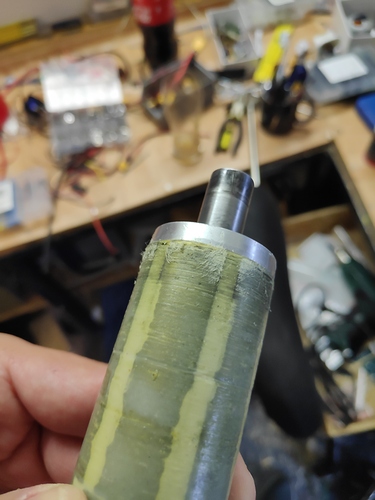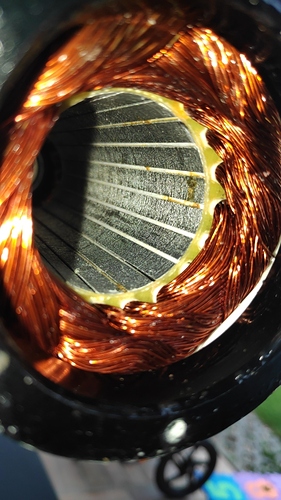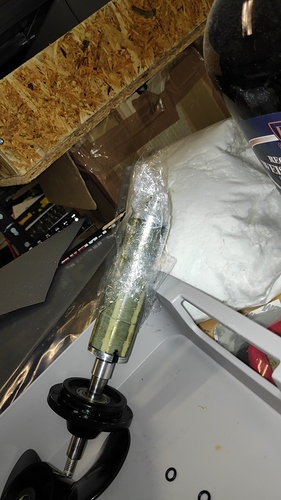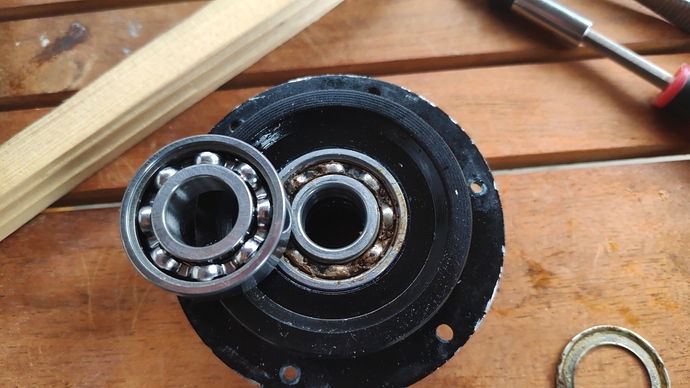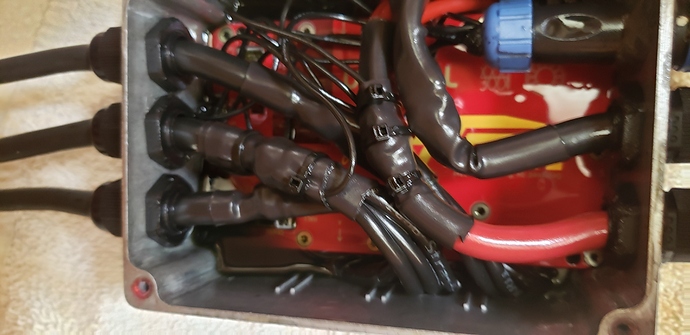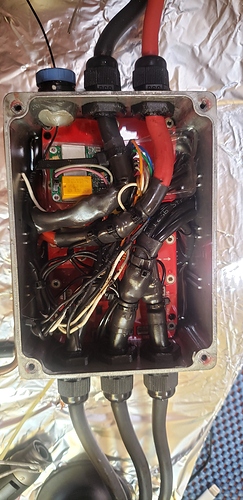Guys. To put the stator back in the housing you just slide it in? I tried it all but it will stick to the side very strong because of the magnets. I even opened up the rear but the wires are to tight
Yep. Regular nitrile shaft seals.
Beware there is some risk to fail a future group buy if contacted by too many individuals: post 168.
I know the manufacturer and have dealt with them…
You need to push the stator/front cap firmly while rotating the stator. Use a long bolt and put it through the hole of the shaft to be able to turn it. I might assemble my motor tmrw, I can try to make a video if needed
So do I. And I keep doing so.
That would be really helpful for me and others I think. Thanks
Hi,
sorry but I had some late night session and nobody to hold the camera. For re-assembly you need both hands. Anyway I found the failure I guess. First I thought I have an issue with the bearing in the bottom which is not the case. The bearing is fine, still I replaced it. Thanks to @Flightjunkie how to disassemble everything it helped me a lot. Then I thought it is the stator which is hitting the wall due to corrosion. And indeed it looked scratched and there was some corrosion on the position pointing out of the plane.
I grinded the corrosion to smoothness and repaired the stator by using a little amount of epoxy, thanks to @Toto44 for this hint. Some wrap, and it was good again
Put everything back, still noisy. So I took out the cover from front bear, and it looked like this:
Next to it a fresh one. The front bearing corroded quite badly
 well in the end both bearing are replaced and motor is filled with corrosionX. Maybe this is why they changed their seling from oil to the new ceramic version…
well in the end both bearing are replaced and motor is filled with corrosionX. Maybe this is why they changed their seling from oil to the new ceramic version…
For your memory, before:
and after:
So you saying the Japanese bearing failed? The one that would be most affected by an unbalanced prop…
The inside part that turns is the rotor. The outside with the windings is the stator.
Indeed, Japan failed. But I do not think that the Japan bearing is also responsible for stator scratches.
A mild wobble could cause a catch if the tolerance is small enough…
I would agree if the scratch would be on the side where the defective bearing is, but it was on the opposite side. Anyway, I might replace the shaft sealing by time, I do not have much confidence in it now. I asked Flipsky already if older Motors can be upgraded to the new sealing.
I have the same shaft seal on my 65161 and have had no leaks. I have always used a balanced prop though.
On my first geared drive, I used an unbalanced prop and had a bit of water ingress. When I changed to a balanced prop it stopped.
If there is a failed bearing, the first place to catch will be where the tolerance is the tightest. If there was a bit of corrosion on either the stator or rotor, then it easily could happen at the side opposite to the failed bearing.
Correct,I also expect the rotor damage due to the corrosion which was caused by the small water intake. All of this might be related to an unbalanced prop. Case closed 
What max amps you are driving your motor?
I think the heaviest I have gone on takeoff was about 130 amps at the motor…
I had to hammer a bit to get the stator into the rear bearing. Your motor is really silent. Would a vesc or foc controller be more silent than a flier esc?
The corrosionX will remain a liquid. If you opened your motor and it is a paste then it is contaminated with water, or you didn’t put enough and it just coated everything and disappeared. Clean it out with rubbing alcohol and fill it with clean corrosionX.
I just opened my VESC box after months and the corrosionX was good as new. I moved my receiver to inside the box with my VESC now that my 120cm antenna finally arrived.
Thank you for putting up some numbers.
But, I expect my bearings to last for several years. I skateboarded for 10 years. Beat the shit out of my bearings. Most failures were due to corrosion.
The only failures I have seen in these motors are due to moisture, rust, corrosion, or a combination of this and lack of lubrication. My motor is half full of corrosionX in liquid form which is continuously lubricating the bearing, and preventing corrosion.
I’ll let you guys know if / when my motor bearing fails.
And, the motor shaft does have radial loads. It’s caused by what pilots call P-factor, and boaters call Prop Walk.

I’m sure you didn’t mean that you hammered on it.
Do not hammer on it guys!
Just put the rotor in by hand without the front plate on the shaft. Hold the shaft with a rag and use hand force to torque it side to side untill the shaft slides into the back bearing. Then silicone grease the shaft seal, and o-ring, Tef Gel the flange and screw holes and slide the front cover onto the shaft. You might have to “tap” the front cover with a rubber mallet to get it to line up, over come the magnetic force. But go easy, don’t damage the o-ring.

